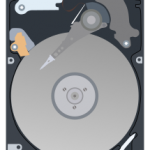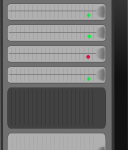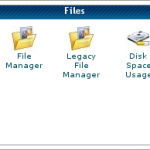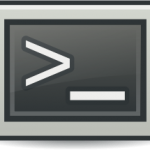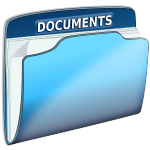If you are managing a server from the terminal and do not use a control panel. You can take a look at your disk space usage by entering the command: df -h The above command will work under different Linux distributions and *BSD operating systems. The results will show your different filesystems and their sizes. […]
Category: Tutorials
How to tell what Linux distribution and what version you are using on your server
If you manage different servers and need to tell quickly what Linux distribution and version of that distribution you are using. You can ssh into that server and execute the following command: cat /etc/*-release If you are using Debian 8.0 then the results would look like this: PRETTY_NAME=”Debian GNU/Linux 8 (jessie)” NAME=”Debian GNU/Linux” VERSION_ID=”8″ VERSION=”8 […]
Cpanel/WHM email ports for email client
Ports for accessing Cpanel and WHM
Question: What are the ports for accessing WHM and Cpanel? Answer: For Cpanel the port is 2083, for WHM the port is 2087, and for accessing Webmail the port is 2095. Cpanel: https://127.0.0.1:2083 WHM: https://127.0.0.1:2087 Webmail: https://127.0.0.1:2096 You will need to replace 127.0.0.1 with your servers IP address or your site’s domain name. If you […]
How to create an FTP user with Cpanel
How to update CentOS from the terminal
If you are running CentOS and want to update all the software that was installed via yum. You can execute the following command, yum will download the updates and proceed to install them. You should be the root user to be able to execute the commands below. After the update process has been completed you […]
How to create a subdomain in Cpanel
Follow these steps to setup a subdomain for your website in Cpanel. 1. Login to your web host’s control panel. There is a good chance that your web host is probably using Cpanel. 2. After you login successful. You should see the following area inside Cpanel. Click on “Subdomains” to continue to the creation of […]
Start, Stop, or Restart Nginx
This is a tutorial on how to manage your Nginx web server under CentOS 7.x, Debian 8.x (Jessie), and FreeBSD 10.x. Commands to start, stop, and restart Nginx web server for these operating systems are shown below and are separated by the different operating systems. CentOS (version 7.x) To start Nginx under CentOS: systemctl start […]
Manage Apache under CentOS, Debian, or FreeBSD
The following are commands to start, stop, and restart the Apache web server from the terminal. The commands are broken into different sections for different operating systems. Depending on which operating system your server is using, the command to use to stop, start, or restart Apache may vary. CentOS (version 7.x) To stop the Apache […]
How to install mtr on Linux systems
You can always do a simple traceroute to diagnose where the network issue or latency is or you can use mtr to do the job. The mtr application is a basic tool to help do traceroute and provide more information to help administrators diagnose where there are issues. The mtr application provides pocket loss information, […]

